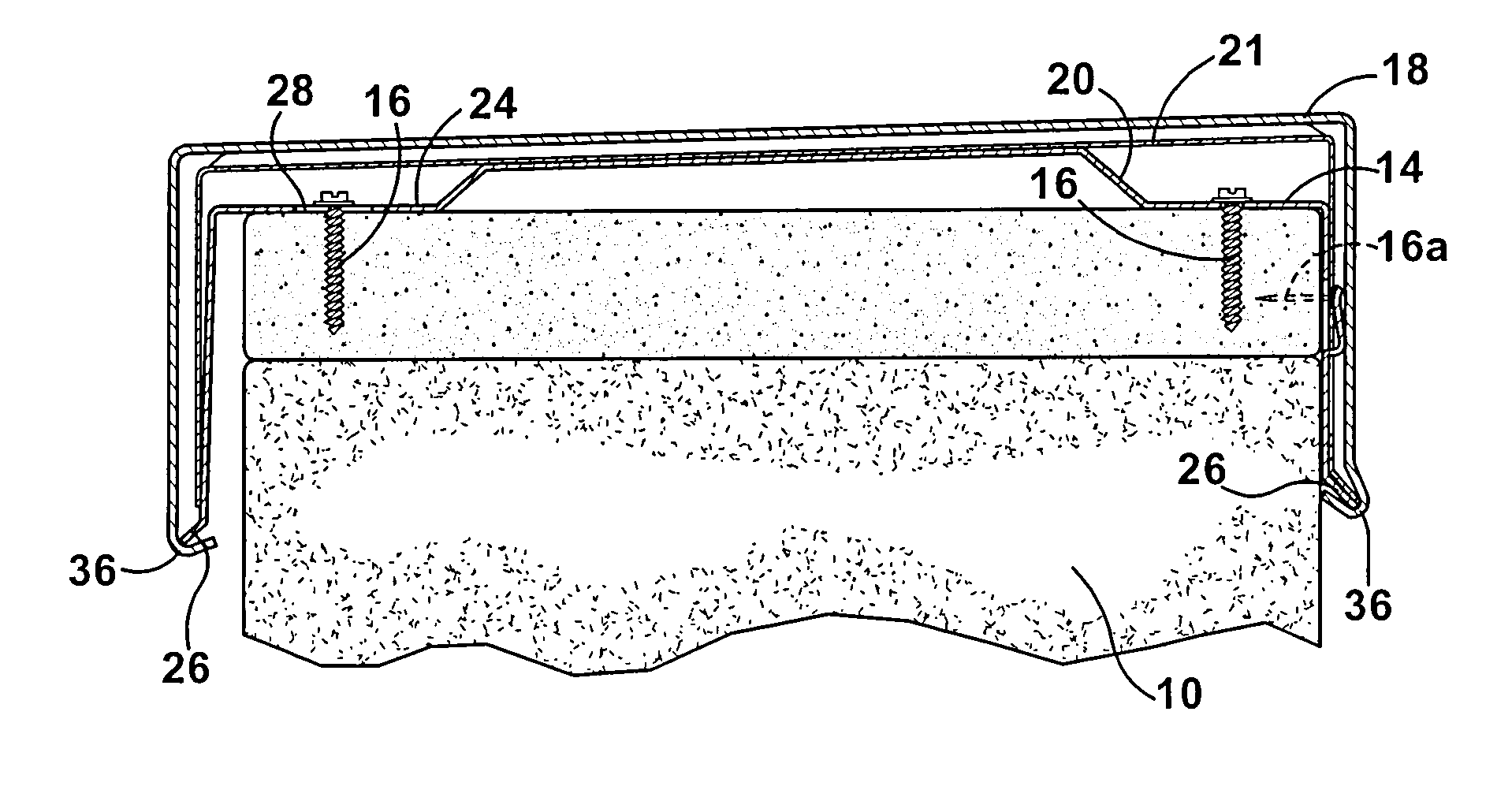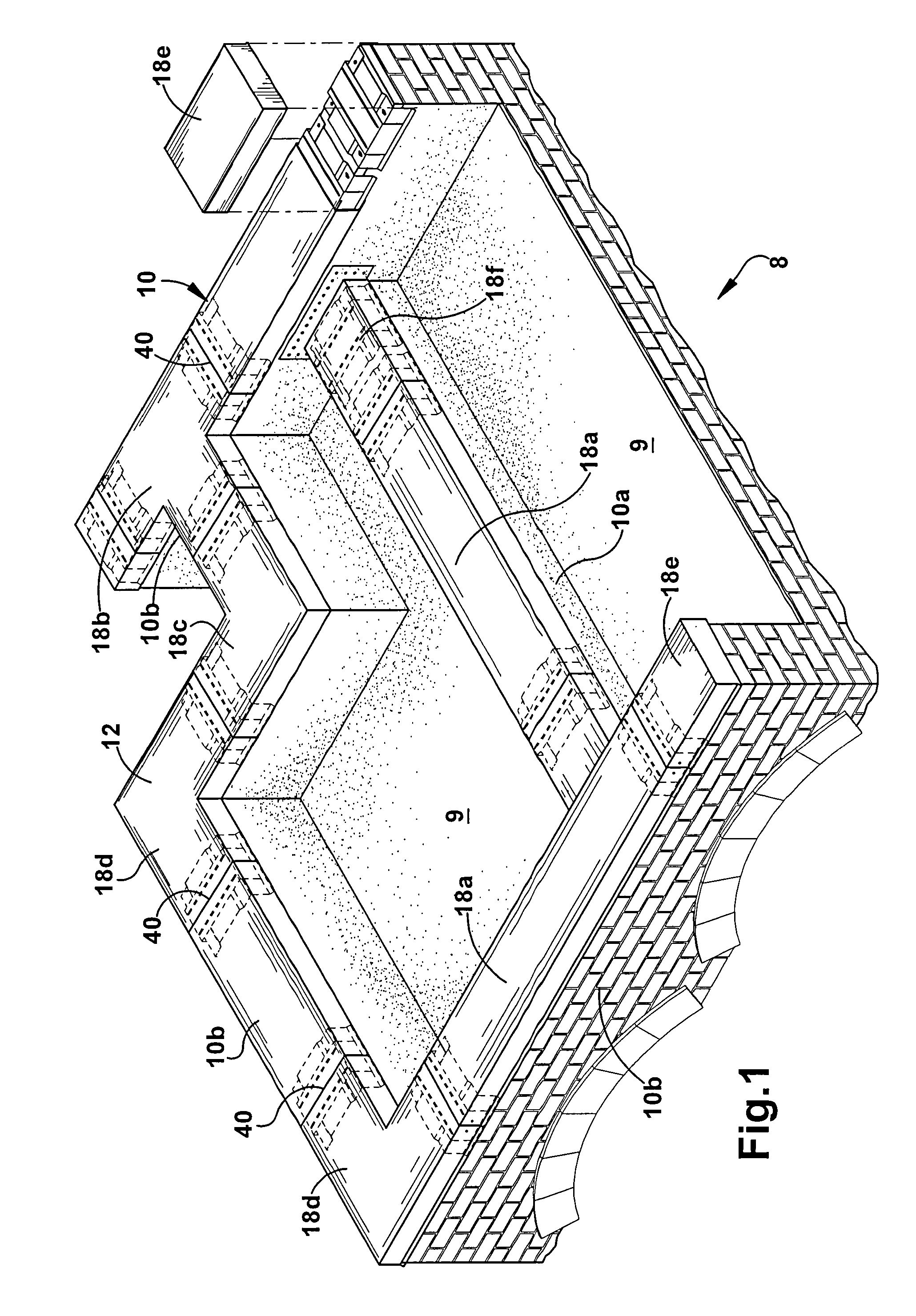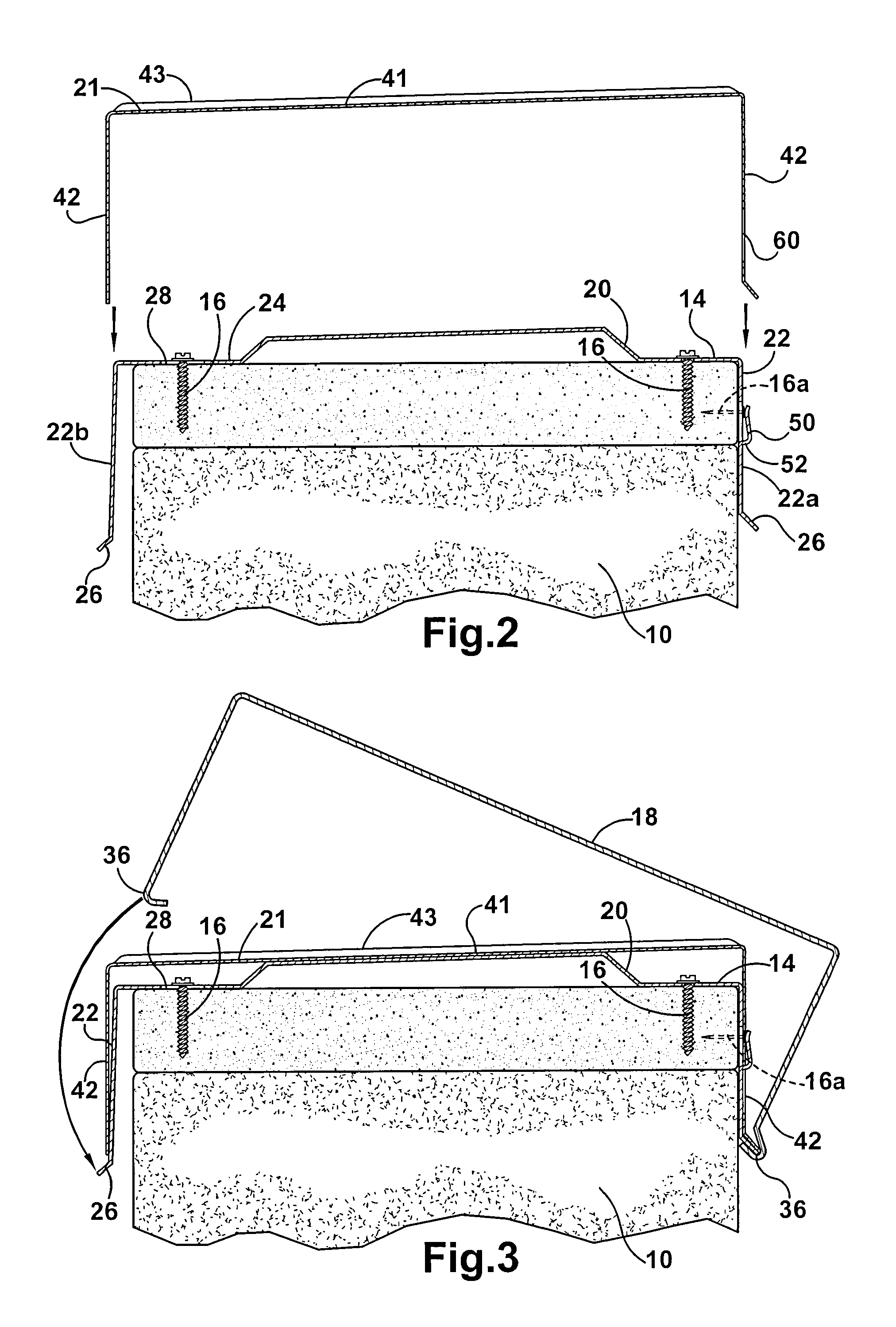Roof wall coping system and method
a coping system and roof wall technology, applied in the field of coping systems, can solve the problems of unsightly corrosion, roof failures, interior of buildings, etc., and achieve the effect of avoiding longitudinal shifting of a splice plate, reducing the number of components, and facilitating installation
- Summary
- Abstract
- Description
- Claims
- Application Information
AI Technical Summary
Benefits of technology
Problems solved by technology
Method used
Image
Examples
Embodiment Construction
[0019]Referring initially to FIG. 1, a portion of a building 8 having a generally flat or low-slope roof 9 is shown. The illustrated building has both interior and exterior roof walls 10 protruding above the surface of the roof. The interior walls 10a, sometimes referred to as divider or short walls, typically form an upper portion of an interior wall of the building and have a roof surface on both sides of the wall. The exterior walls 10b, sometimes referred to as parapet walls, bound the periphery of the roof and protect the edge of the roof and generally only have a roof surface on an interior side of the wall.
[0020]The interior and exterior walls 10a and 10b, respectively, are exposed to the elements, and the present invention provides a coping system 12 that covers and protects the top of the roof walls and directs water impinging thereon away from the wall to minimize the opportunity for water to enter the building 8 through the wall itself or via the intersection of the wall ...
PUM
 Login to View More
Login to View More Abstract
Description
Claims
Application Information
 Login to View More
Login to View More - R&D
- Intellectual Property
- Life Sciences
- Materials
- Tech Scout
- Unparalleled Data Quality
- Higher Quality Content
- 60% Fewer Hallucinations
Browse by: Latest US Patents, China's latest patents, Technical Efficacy Thesaurus, Application Domain, Technology Topic, Popular Technical Reports.
© 2025 PatSnap. All rights reserved.Legal|Privacy policy|Modern Slavery Act Transparency Statement|Sitemap|About US| Contact US: help@patsnap.com



